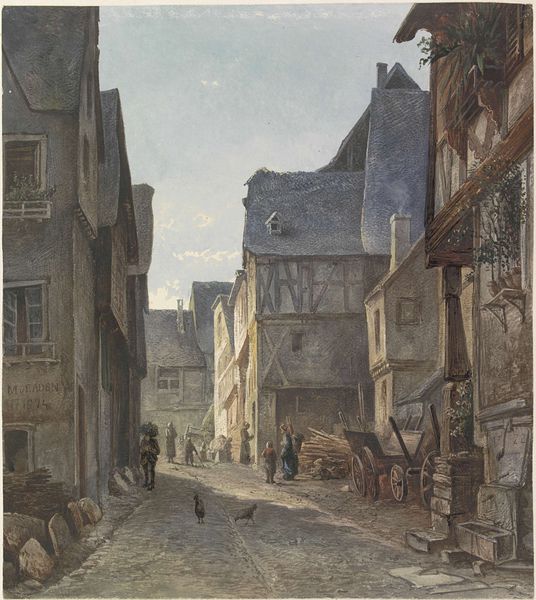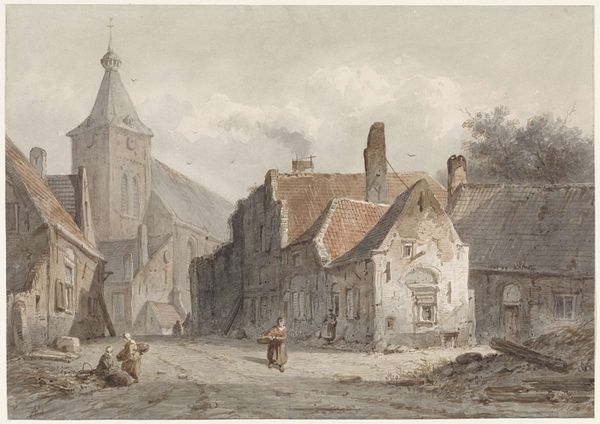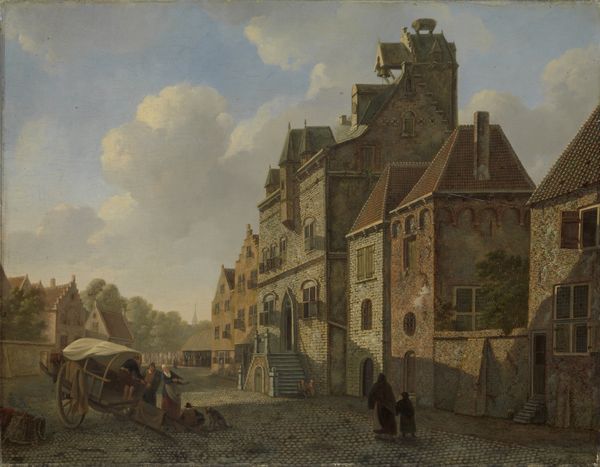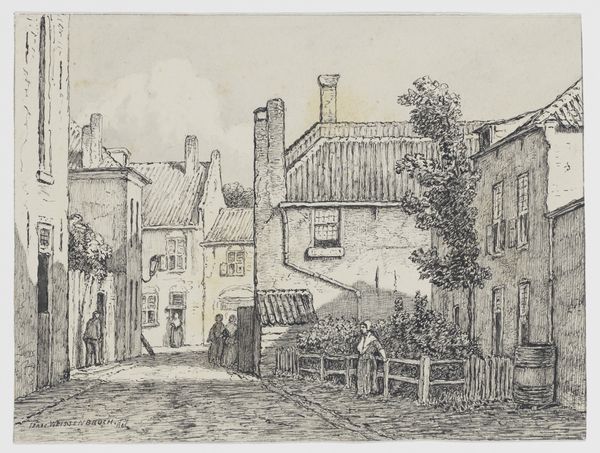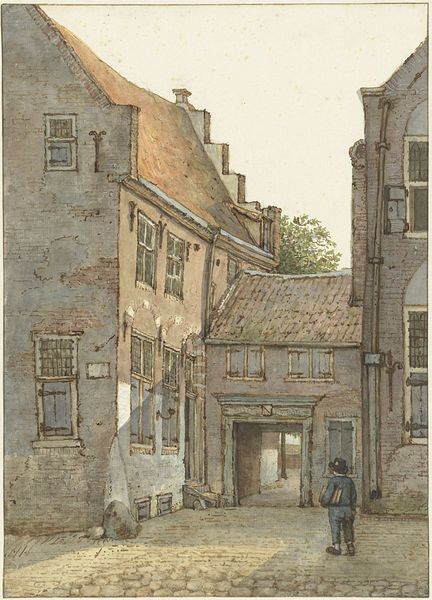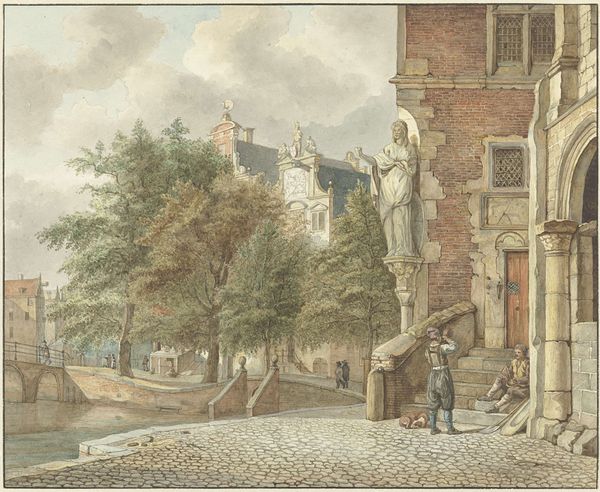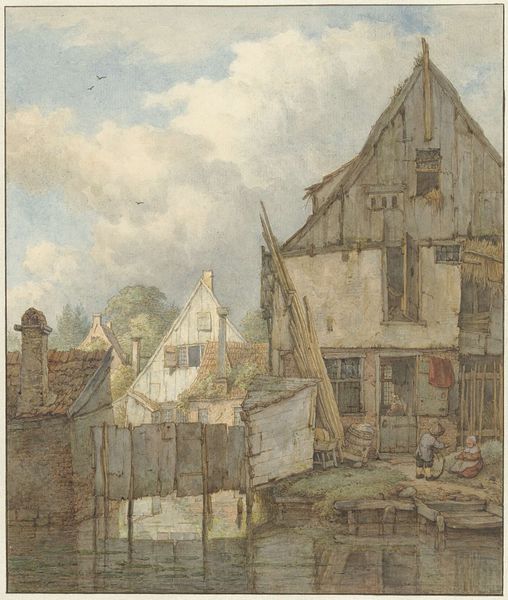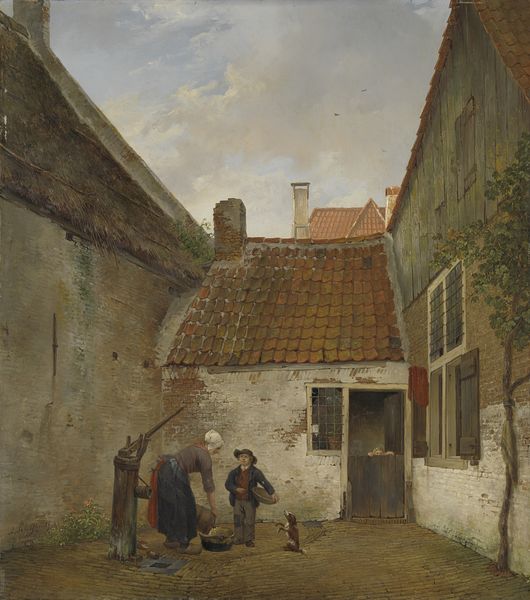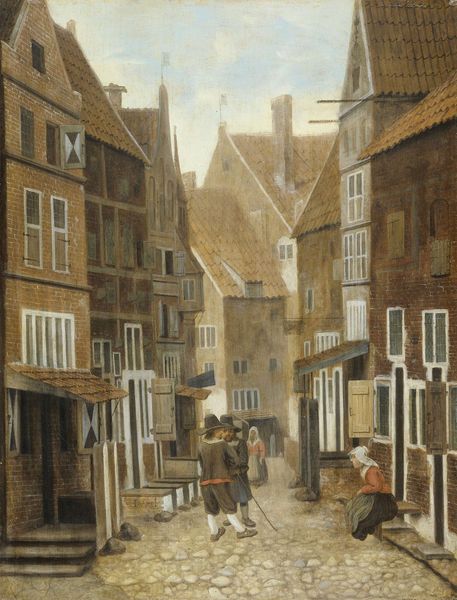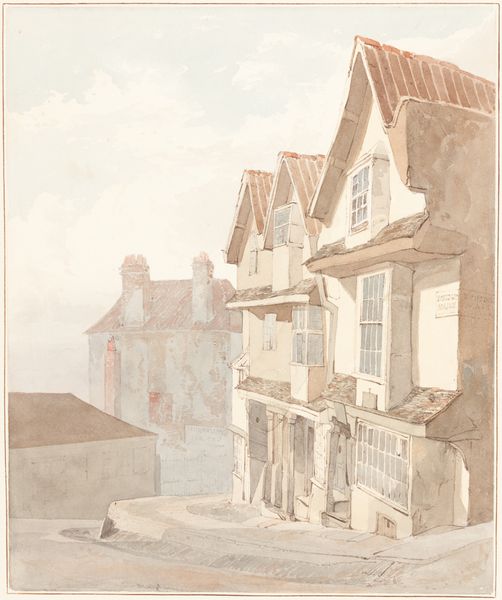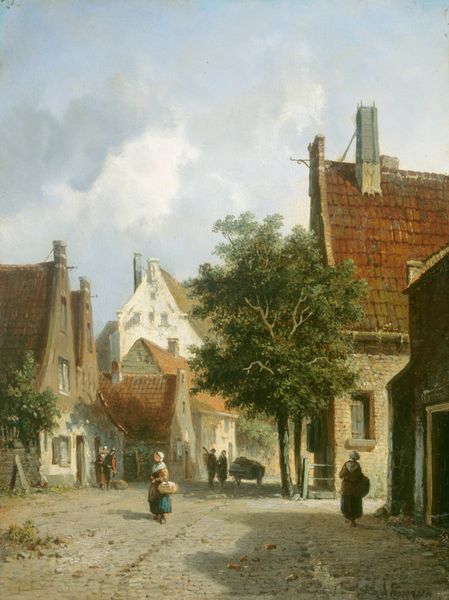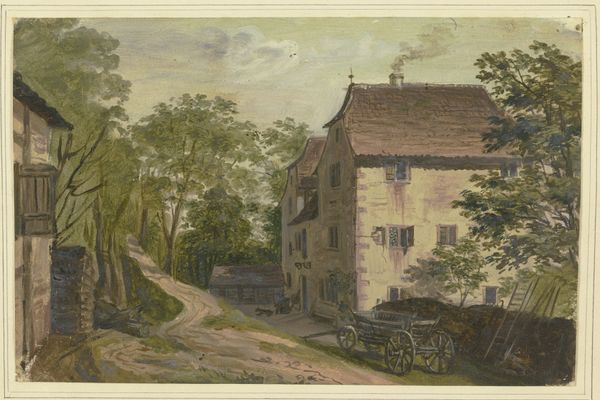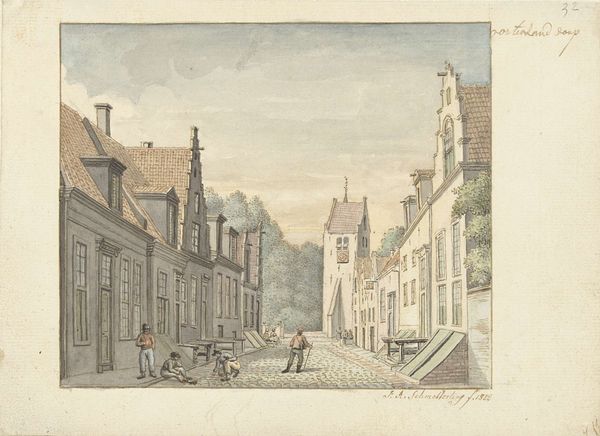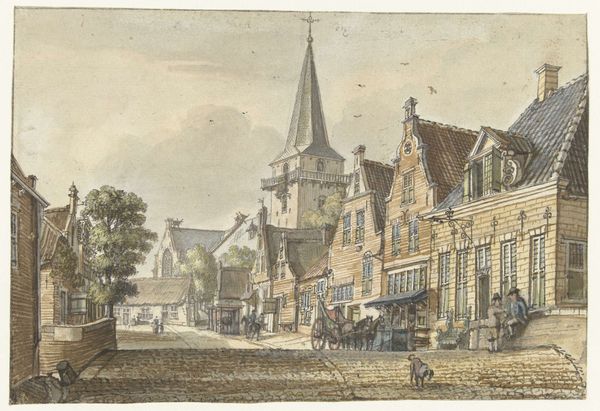
watercolor
#
landscape
#
watercolor
#
coloured pencil
#
romanticism
#
cityscape
#
watercolour illustration
Dimensions: height 207 mm, width 238 mm
Copyright: Rijks Museum: Open Domain
Curator: I find this image strangely serene. Despite the clear representation of labor and perhaps even illness, there's a calmness to it, a kind of resignation perhaps. Editor: What you’re observing is brilliantly captured in this 1814 watercolor by Jan Hendrik Verheijen, entitled "De Waardpoort en de Oude Gracht in Utrecht." It exemplifies the Romanticist fascination with the everyday, yet it’s subtly laced with political undertones pertinent to its time. Curator: Political? In a seemingly quiet Dutch street scene? Explain that to me. It strikes me as genre painting, and in it, the arches, the spires and rooftops, dominate a somber visual language. Editor: Precisely. It’s that somber visual language we must dissect. Verheijen painted this just after the Netherlands was freed from Napoleonic rule. The ordinary citizens, the tired traveler and the figure being pushed in a wheelbarrow--are all, subtly, carrying the burdens of recent history. This romanticising is rooted in its social reality of the time. The towering architecture isn't just background; it’s emblematic of enduring Dutch identity, reclaiming itself after occupation. Curator: So, you’re suggesting these aren’t merely picturesque elements but carefully chosen symbols meant to resonate with a collective sense of Dutch pride and resilience? The archway acting almost as a kind of frame for national identity? Editor: Exactly. Consider also the light—that pale, northern light washing over the scene, a recurring motif in Dutch art used to convey themes of honesty and authenticity. Post-revolution, this carries weight: the watercolor champions authenticity through light, social struggles are acknowledged through composition, all whilst presenting identity and national reclamation via key images. Curator: It’s clever how he embeds the symbolic within the seemingly mundane. It’s almost like a collective exhale after years of tension, channeled through pigment and paper. Looking at this now, it has a lasting effect, in making the viewer really understand how Verheijen saw the reclamation process after the Napoleonic rule. Editor: Agreed. And looking at the way the symbolic language and visual vocabulary works, with his romantic and yet realistic light—all these historical contexts provide this beautiful yet subtle image with so much more profound emotional weight. It creates a powerful connection between past struggles and present identity.
Comments
No comments
Be the first to comment and join the conversation on the ultimate creative platform.
